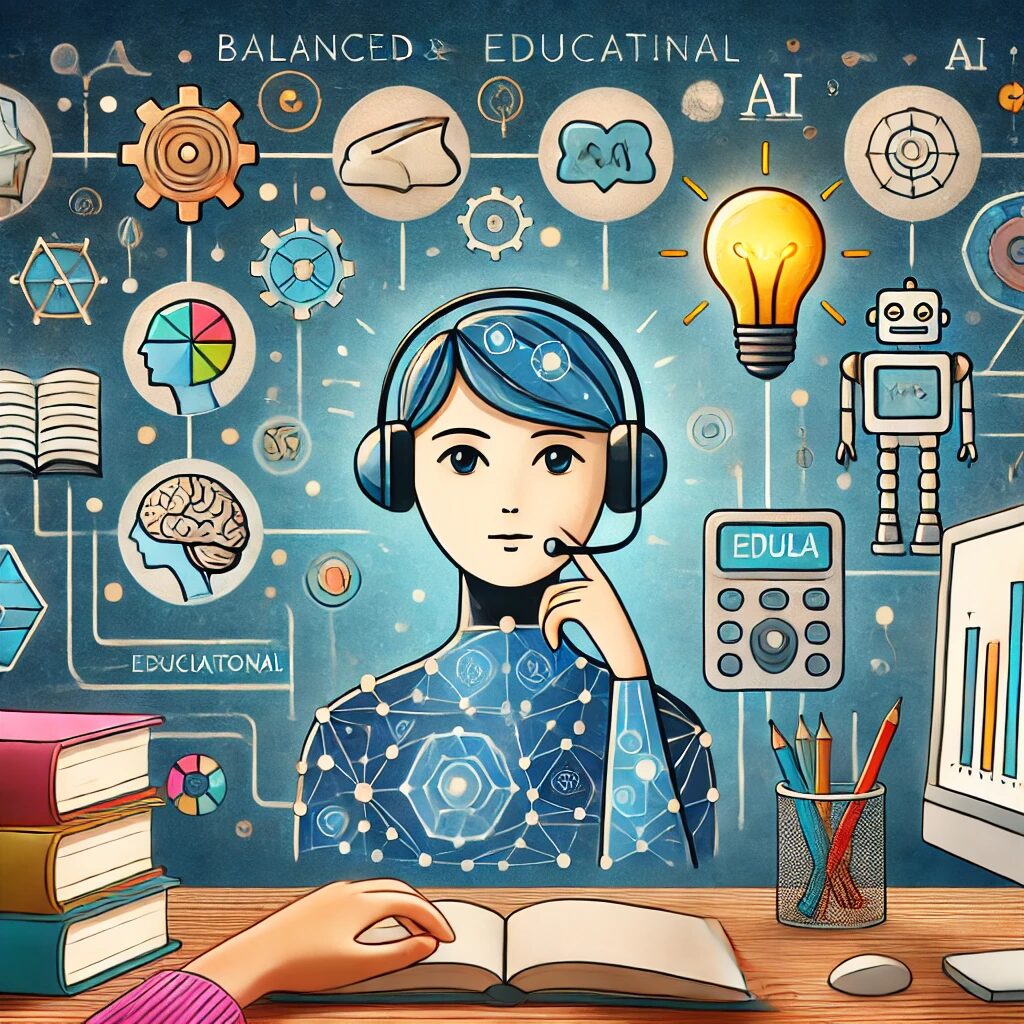Introduction
Recently, my wife and I were given a permission form for our high school freshman to use AI tools this school year. This sparked a debate between us about the role of AI in education, its potential benefits, and the concerns surrounding its use. This conversation inspired me to create this lesson, aimed at helping students understand how to use AI tools responsibly and effectively.
Generative AI, like ChatGPT, can be a powerful tool for enhancing your writing, research, and creativity. However, using it effectively requires understanding its strengths, limitations, and ethical considerations. This lesson will guide you through how to use generative AI, how to cite sources properly, how to enhance your work, and the pitfalls to avoid.
1. How to Use Generative AI
Generative AI can help you with various tasks, from brainstorming ideas to refining your essays. Here are some key ways you can use it:
- Brainstorming Ideas: If you’re stuck on a topic, ask the AI for suggestions. For example, if you need ideas for a history paper, you can prompt the AI with “What are some interesting topics about World War II?”
- Research Assistance: You can ask the AI to explain concepts, summarize articles, or suggest sources. For instance, if you’re studying the water cycle, you could ask, “Can you explain the stages of the water cycle?”
- Writing Assistance: AI can help generate outlines, provide sentence starters, or suggest ways to rephrase sentences. For example, you might ask, “Can you help me write an introduction for an essay on climate change?”
- Tone Adjustment: If you need to make your writing more formal or conversational, AI can help. For example, you can ask, “Can you make this paragraph sound more formal?” or “How can I make this email sound friendlier?”
2. How to Correctly Cite Sources
When you use AI-generated content or ideas, it’s essential to give proper credit, just as you would with any other source.
- Citing AI Tools: If you include a direct quote or idea from an AI, mention the tool and the date you used it. For example, “According to ChatGPT (2024), the water cycle consists of evaporation, condensation, and precipitation.”
- Referencing Other Sources: If the AI provides you with a source, always check the original document to verify its accuracy and cite it according to your teacher’s preferred citation style (e.g., MLA, APA). Never rely solely on the AI’s summary.
3. Enhancing Your Topic with AI
Generative AI can make your work more engaging and thorough:
- Deepening Understanding: Use AI to explore a topic more deeply. If you’re writing about renewable energy, you might ask, “What are the latest advancements in solar technology?” This can lead to more detailed and informed writing.
- Diversifying Perspectives: Ask AI to present different viewpoints on a topic. For example, “What are the pros and cons of electric cars?” This will help you create balanced arguments.
- Creative Enhancement: If you’re working on a creative project, AI can help generate story ideas, character names, or even dialogue. For example, “Can you create a plot for a science fiction story set in the year 2100?”
4. Adjusting the Tone of Published Work
The tone of your writing can significantly impact how it’s received. Generative AI can help you tailor the tone to suit your audience:
- Formalizing Language: For academic papers, you might ask, “Can you make this paragraph sound more formal?”
- Simplifying Complex Ideas: To make a topic more accessible, ask, “How can I explain quantum physics in simple terms?”
- Adapting for Different Audiences: If you’re writing for a younger audience, you could prompt, “How can I rewrite this for middle school students?”
5. How Not to Use Generative AI
While AI is a powerful tool, there are wrong ways to use it:
- Plagiarism: Don’t copy and paste AI-generated content and pass it off as your own. Always add your own ideas and voice.
- Over-Reliance: Don’t let the AI do all the thinking for you. Use it as a tool to enhance your work, not replace your creativity and critical thinking.
- Ignoring Quality: AI can sometimes provide incorrect or low-quality information. Always double-check facts and refine the AI’s suggestions.
6. Pitfalls of Over-Reliance on AI
Depending too much on AI can hinder your learning and creativity:
- Loss of Critical Thinking: If you rely too much on AI, you might miss out on developing your own problem-solving and analytical skills.
- Reduced Originality: Over-reliance can make your work less original, as it might lack your unique perspective and ideas.
- Inaccuracy and Bias: AI can sometimes provide biased or inaccurate information. Relying on it without verification can lead to errors in your work.
Conclusion
Generative AI is a valuable tool for high school students, offering ways to enhance creativity, research, and writing. However, it’s crucial to use it responsibly, ensuring that you contribute your own ideas and verify information. By understanding both the benefits and limitations of AI, you can use it to its full potential while developing your skills and maintaining academic integrity.


